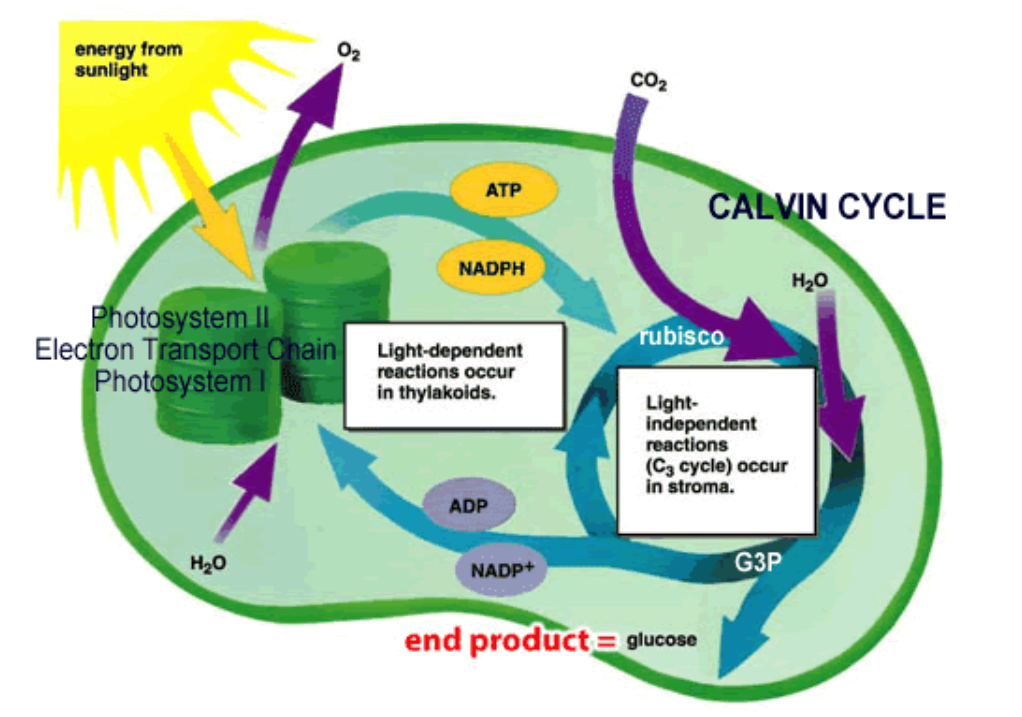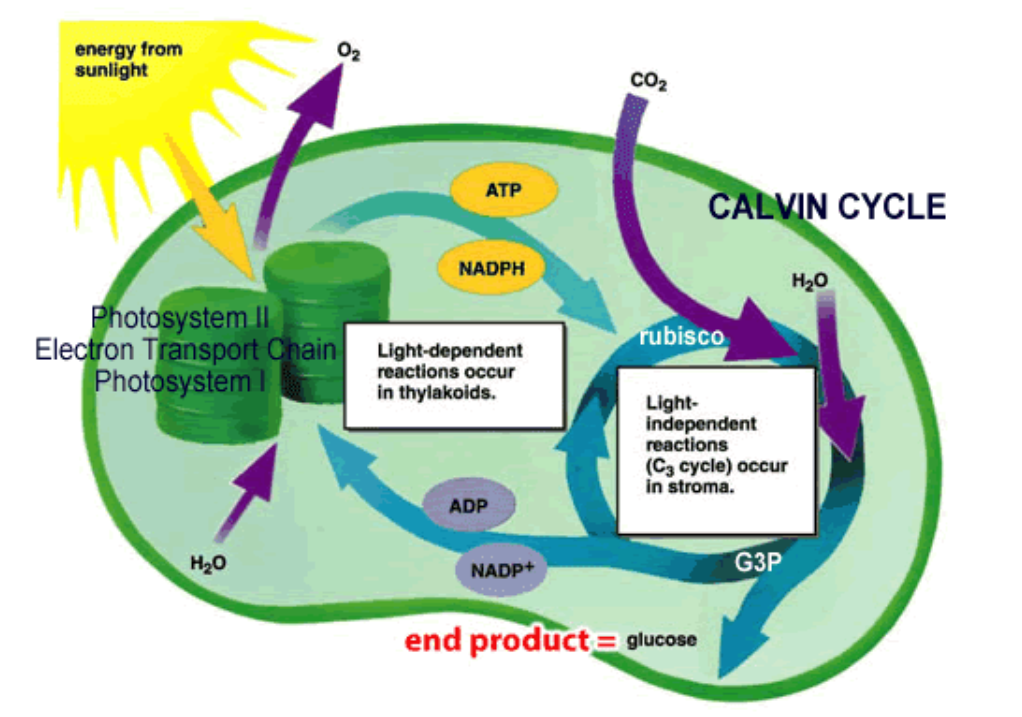Photosynthesis / Cellular Respiration
1/5
There's no tags or description
Looks like no tags are added yet.
Name | Mastery | Learn | Test | Matching | Spaced |
|---|
No study sessions yet.
6 Terms
Where do Light Reactions and Dark Reactions occur?
They both occur in the Chloroplasts
Light Reactions
Occur in the Thylakoids
Dark Reactions
Occur in the Stroma
What are light Reactions?
A sequence of reactions that use sunlight and water to produce ATP and NADPH for use in the Calvin Cycle ( Dark Reactions ).
What are the products / by-products of Light Reactions Photolysis?
The energy created is ATP and NADPH - products
Oxygen ( O2 ) - by-products

What is the process of Light Reactions / Photolysis? ( 5 Steps ) ( First Reaction )
Step 1: Photosystem II
Light strikes the chlorophyll, exciting the electrons which are used to power the rest of the process.
Splits Water (H2O ) into H+ ions and O2
Step 2: 1st Electron Transport Chain ( ETC )
Pumps the Hydrogen Ions ( H+ ) from the Stroma into the Thylakoid.
H+ ions converts later into ATP.
Step 3: Photosystem I
Light strikes the chlorophyll again, recharging the electrons for Step 4.
Step 4: 2nd Electron Transport Chain ( ETC )
Recharged electrons are used to make NADPH for the Calvin Cycle ( Dark Reactions ).
Step 5: ATP Synthase Channel
Enzymes pump the H+ ions that were in the Thylakoid back into the Stroma. Uses the energy created to make ATP for the Calvin Cycle ( Dark Reaction ).


What is the process of Dark Reactions / Light Independent? ( 3 Steps ) ( Second Reaction )
Step 1: Carbon Fixation
3 molecules of CO2 enters, one Carbon atom from each Carbon Dioxide is added a 5-Carbon sugar ( Ribulose Biphosphate ( RuBP ) )
Makes a 6-Carbon molecule
Step 2: Chemical Reshuffling ( Reduction )
Set of reactions involving ATP and NADPH to form 3-Carbon molecules ( PGAL / G3P )
Step 3: Regeneration
PGAL molecules that do not leave are reformed into RuBP through the usage of ATP.

What are the products / by-products of Dark Reactions?
The energy released is ADP and NADP+ which is fed back into the Light Reactions. - by-product
Glucose - product.